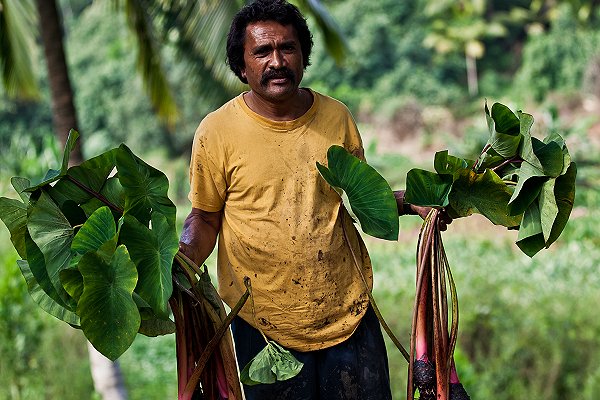
Cook Islands prepares for ‘early action rainfall watch’

(A version of this story first appeared last week on the SPREP news site.)
Cook Islands stakeholders last week participated in an interdisciplinary workshop in Rarotonga, the largest island in the Pacific nation, to identify impacts of year-to-year changes in rainfall on a range of environmental variables, for example on the taro crop.
The consultation is part of a three-step process for the development of an Early Action Rainfall (EAR) watch instigated by the Cook Islands Meteorological Service (CIMS) with the support of the Australian Bureau of Meteorology, the IFRC, and the Secretariat of the Pacific Regional Environment Programme (SPREP).
The Cook Islands climate varies considerably from year to year due to the El Niño-Southern Oscillation – a natural phenomenon that occurs across the tropical Pacific Ocean and also affects the global climate.
In Rarotonga, El Niño events tend to bring drier than normal conditions, while in the northern islands they usually bring wetter than normal conditions.
‘The main purpose of the rainfall watch is to
provide information to help sectors plan, prepare,
and respond to increased risk of drought or flooding’
Although drought is a naturally recurring event in the Cook Islands climate, scientists predict with medium confidence that the frequency and magnitude of drought will increase slightly in the northern Cook Islands under a future high-emissions scenario.
“The southern Cook Islands were affected by drought in 1982–83, 1997–98, 2010 and 2015 in Rarotonga,” said CIMS Director Arona Ngari.
“The most impacted are the Pa Enua [outer islands] where communication, transportation and resources are limited to support the basic services such as water supply, agriculture and health.”
“The main purpose of the EAR watch is to provide sectors with information on rainfall variation over the past 12 months and rainfall forecasts for the coming months to help them better plan, prepare and respond should there be increased risk of drought or flooding that would likely trigger secondary impacts such as the outbreak of water-borne diseases.”
Fine Tuitupou-Arnold, Secretary General of the Cook Islands Red Cross, highlighted the simplicity of the EAR watch: “Organizations working with communities need to be equipped to communicate climate and weather information in simple terms that all groups in the community can understand. The EAR watch will help the Cook Islands Red Cross do this.”
The EAR watch process has been replicated in Fiji, Papua New Guinea, Samoa, the Solomon Islands, Tuvalu and Vanuatu. It is implemented and funded through the Climate and Oceans Support Program in the Pacific of Australia’s Department of Foreign Affairs and Trade
“The government of Australia is proud to support the Climate and Oceans Support Program in the Pacific,” said the department’s Natalie McKelleher.
“I was pleased to be part of the EAR watch consultation and see the Cook Islands met service and representatives from government departments, sectors and NGOs discussing how information on rainfall and drought can help them with their planning in the face of climate change.”
On Mangaia Island, the southernmost of the Cook Islands, Piri Metua, 53, a farmer with seven children, used to grow taro in swampland, but water became scarce and he had to adapt by planting new crops. (Library photo: Benoit Matsha-Carpentier/IFRC)